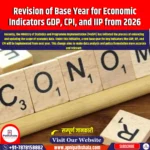PM Pranam Scheme
|
General Studies Paper III: Agricultural Marketing, Government Policies and Interventions |
Why in News?
In the year 2023–24, the PM-PRANAM scheme achieved a significant milestone by reducing the consumption of chemical fertilisers by 15.14 lakh tonnes, thereby easing the burden on subsidy and promoting natural farming. This marks a noteworthy progress in the direction of sustainable agriculture.
What is PM Pranam Scheme ?
- Introduction:
- PM-PRANAM refers to the “Programme for Restoration, Awareness, Nourishment, and Amelioration of Mother Earth”, aimed at reviving ecological balance.
- The central government sanctioned the scheme in June 2023 to promote sustainable farming practices.
- Its core objective is to curb chemical fertiliser use and motivate states to shift towards eco-friendly alternatives.
- The scheme is operational for a three-year period, starting from the financial year 2023–24 and concluding in 2025–26.
- It was announced in the Union Budget 2023–24.
- This scheme benefits all states and Union Territories that take active steps toward adopting alternative fertilisers.
- Under this initiative, farmers also receive incentives and technical support to shift from chemical fertilisers to natural and organic alternatives.
- Types of Fertilisers Covered:
- Various categories of fertilisers included under the scheme:
- Urea
- DAP (Diammonium Phosphate)
- NPK (Nitrogen, Phosphorus, Potassium)
- MOP (Muriate of Potash)
- Objectives:
- The scheme’s primary aim is to promote the balanced use of chemical and alternative fertilisers.
- It seeks to raise awareness among both states and farmers about organic and natural farming practices.
- The scheme intends to encourage states and Union Territories to take measurable steps towards increasing the use of alternative fertilisers.
- Its objective also includes conservation of natural resources, improving soil health, and ensuring long-term agricultural sustainability.
- Through this scheme, the government aspires to spread the message of regenerative agriculture to both the public and the farming community.
- A key financial goal of the scheme is to cut fertiliser subsidy expenses by ₹20,000 crore.
Implementation and Financial Structure of PM-PRANAM Scheme
- Implementation
- Data Management:
- To ensure proper tracking, the scheme employs the Integrated Fertilisers Management System (iFMS), a dedicated digital tool.
- iFMS captures real-time fertilizer usage data, enabling precise monitoring and assessment.
- Through iFMS, it is ensured that the reduction in chemical fertiliser use by states and UTs is accurately measured and assessed.
- Institutions Involved:
- The Ministry of Agriculture and Farmers’ Welfare along with the Department of Fertilisers oversees its implementation.
- At the ground level, state governments, UT administrations, agricultural universities, and research institutions play a vital role in implementation.
- This multi-tier collaboration mechanism helps in effectively translating the scheme’s objectives to the grassroots level.
- Data Management:
- Financial Provisions:
- If a state or UT reduces the usage of chemical fertilisers in comparison to the average consumption over the past three years, they receive 50% of the subsidy savings as a financial grant.
- This financial support is meant to be utilised for the welfare of local communities, particularly farmers.
- The grant is divided into two major categories:
- If a state or UT reduces the usage of chemical fertilisers in comparison to the average consumption over the past three years, they receive 50% of the subsidy savings as a financial grant.
- In the first category, 70% of the fund is allocated for activities related to production, adoption, and technological development of alternative fertilisers.
It focuses on embracing new technologies, promoting sustainable farming, and encouraging scientific innovations. - In the second category, 30% of the funds are directed towards incentivising farmers, panchayats, FPOs (Farmer Producer Organisations), and SHGs (Self Help Groups) to encourage adoption of natural and organic fertiliser options.
Importance of the PM-PRANAM Scheme
- Reduction in Chemical Fertiliser Use: In India, chemical fertilisers have been extensively used for decades to boost agricultural productivity, which has adversely affected soil quality and biodiversity. The PM-PRANAM scheme encourages states by offering incentives to shift towards alternative options, thereby paving the way for revitalising the natural fertility of soil.
- Resource Conservation: The production of fertilisers consumes significant amounts of water, energy, and mineral resources. This scheme becomes a mechanism to prevent the misuse of such resources and to ensure their sustainable utilisation by promoting natural farming and alternative fertilisers.
- Promotion of Alternative Farming: PM-PRANAM encourages farmers to adopt natural sources like organic manure, cow dung, green manure, and vermicompost. This shift not only reduces production costs, but also enhances crop quality and boosts export potential. Simultaneously, it also leads to the revival of traditional agricultural knowledge.
- Environmental Improvement: The excessive use of chemical fertilisers has led to problems like water pollution, soil erosion, and greenhouse gas emissions. PM-PRANAM plays an active role in mitigating these impacts, thereby assisting in slowing the pace of climate change and in maintaining ecological balance.
Phasing Out the Retention Pricing Scheme: India’s Retention Pricing Scheme kept fertiliser prices artificially low, increasing the burden of subsidies on the government. The PM-PRANAM scheme is a step towards gradually phasing out this policy, allowing for realistic pricing of fertilisers and the development of a viable market-based system.








